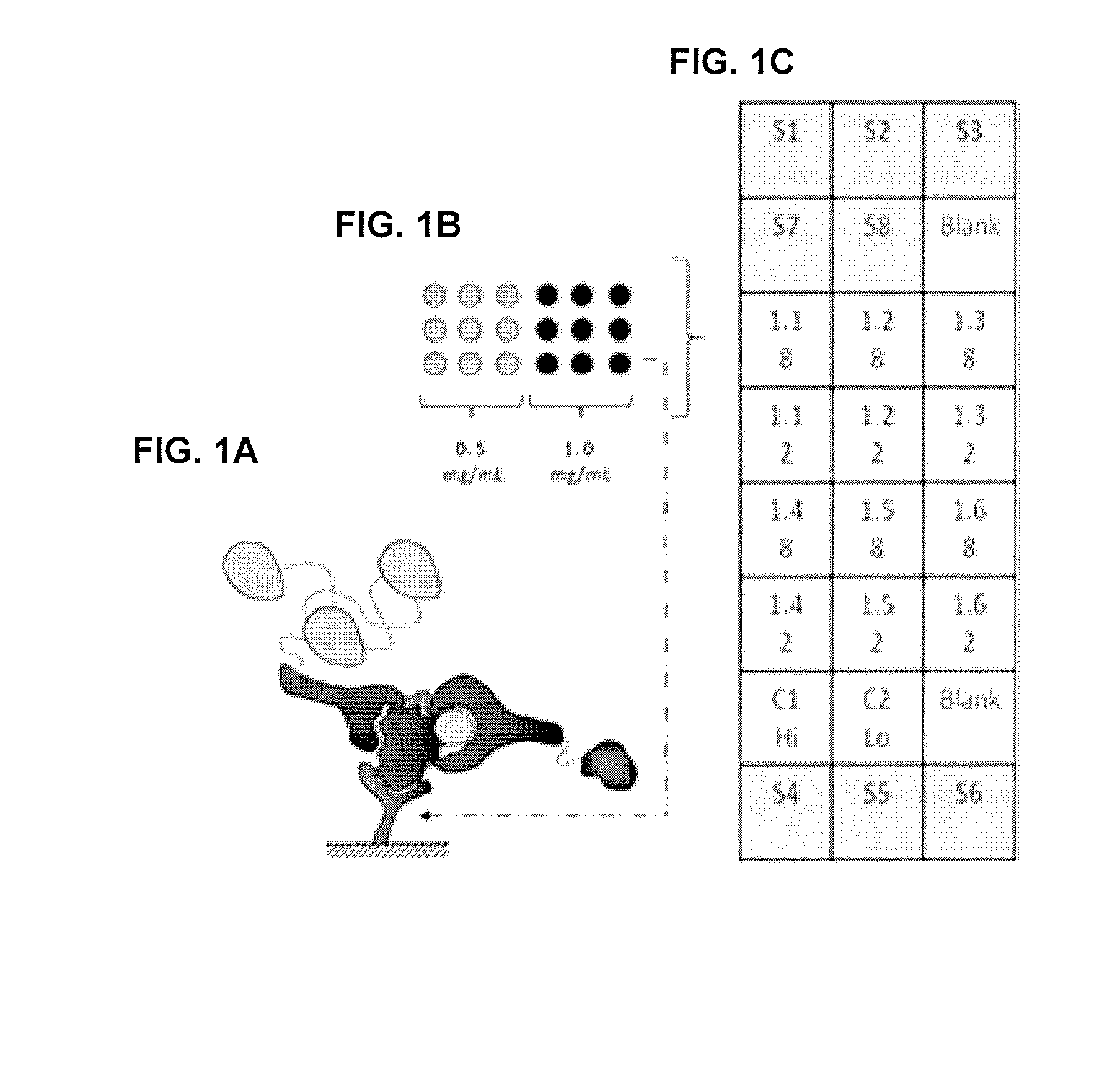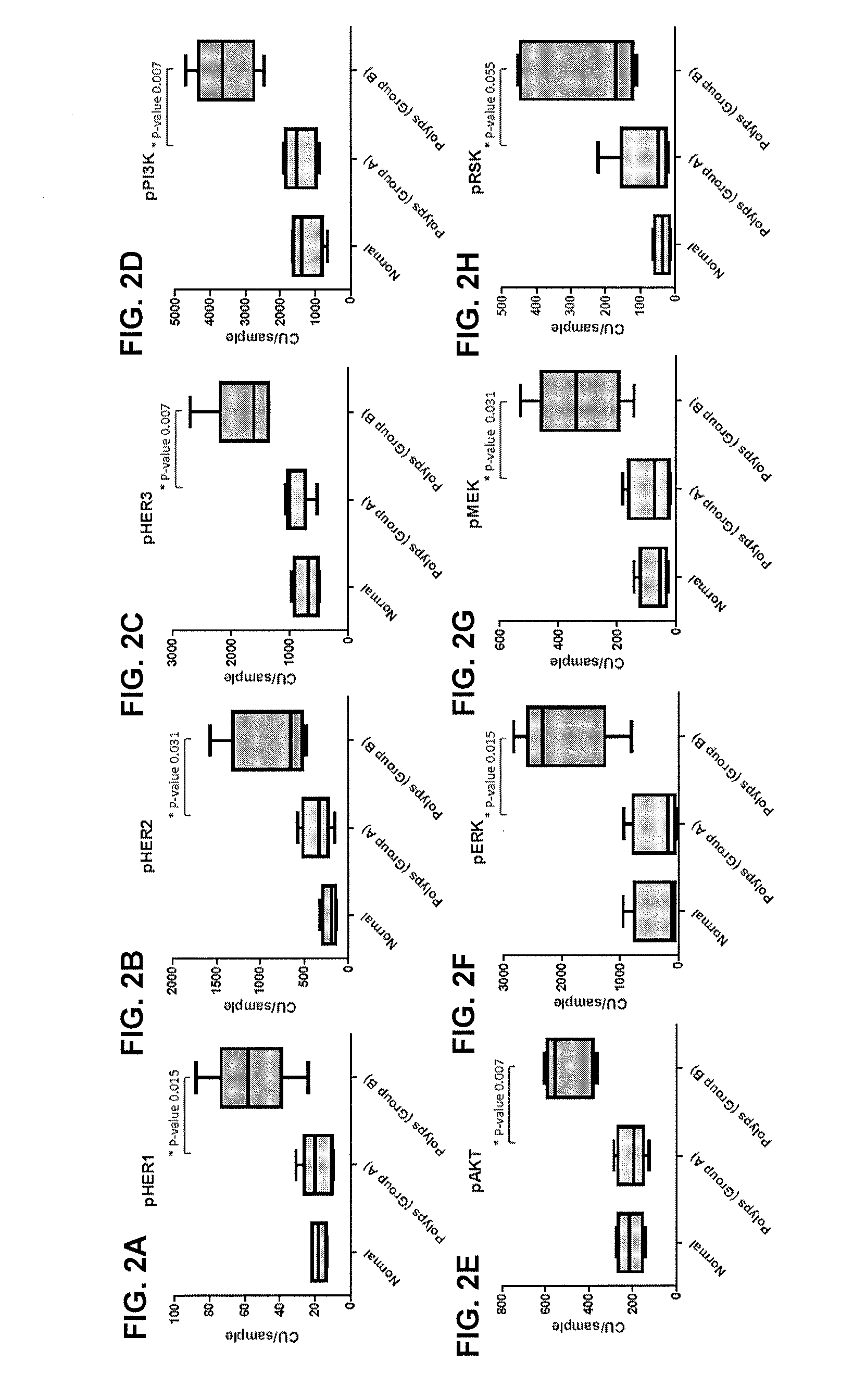Polyp recurrence
a technology of polyp and recurrence, applied in the field of polyp recurrence, can solve the problems of colorectal cancer in younger people, and increased risk of developing cr
- Summary
- Abstract
- Description
- Claims
- Application Information
AI Technical Summary
Benefits of technology
Problems solved by technology
Method used
Image
Examples
example 1
High Levels of Activated Analytes Used in a Patient's Polyp Sample for Diagnosing Colorectal Cancer
[0205]This example shows a method of determining the risk of developing colorectal cancer in an individual. The method includes detecting the activation and / or expression level of at least one signal transduction molecule in a cell lysate prepared from a polyp sample taken from the individual, comparing the activation and / or expression level to a control, and indicating that the individual is at risk of developing colorectal cancer if the activation and / or expression level of the sample is higher than that of a reference control (e.g., a healthy control or a non-adenomatous polyp control). This example provides an exemplary embodiment of the method using patient samples from a study of polyp recurrence and progression in colorectal cancer.
[0206]Patients included in the study had undergone a polypectomy in and / or after 2003, were affected by multiple polyps <10 mm or one to two adenomas...
PUM
 Login to View More
Login to View More Abstract
Description
Claims
Application Information
 Login to View More
Login to View More - R&D
- Intellectual Property
- Life Sciences
- Materials
- Tech Scout
- Unparalleled Data Quality
- Higher Quality Content
- 60% Fewer Hallucinations
Browse by: Latest US Patents, China's latest patents, Technical Efficacy Thesaurus, Application Domain, Technology Topic, Popular Technical Reports.
© 2025 PatSnap. All rights reserved.Legal|Privacy policy|Modern Slavery Act Transparency Statement|Sitemap|About US| Contact US: help@patsnap.com



